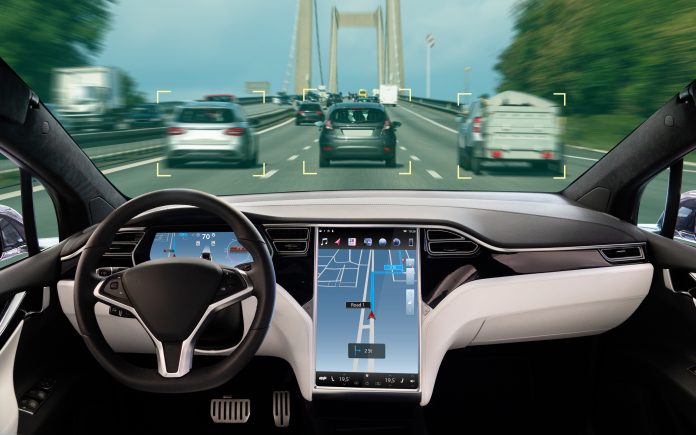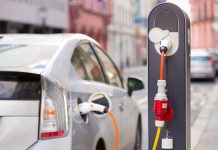How transport innovations and developments will shape our futures despite the challenges of climate change
As the UK continues its moves towards net zero emissions in 2050, transport innovation is a key area of focus. Transport innovations and developments have begun to limit emissions and improve the user experience and viability of many lower-emission alternatives. Here, the touch technology specialist Zytronic considers come of the transport sector’s most exciting developments.
Key findings:
Transport constituted 24% of the UK’s carbon dioxide emissions in 2020, making it the single largest contributing sector.
More battery electric vehicles were sold in 2022 than ever
More battery electric vehicles were sold in 2022 than ever, constituting 16.6% of all new car registrations.
Electric is the most rapidly growing powertrain technology, with global sales expected to reach 34 million by 2025 and 636 million by 2040.
Cheltenham design company Duku is responsible for creating innovative, accessible EV charging points that collapse and are stored under the street when not in use.
Meanwhile, electric, autonomous shuttle bus services have been implemented in five cities worldwide, thanks to Michigan start-up company May Mobility.
High-performance outdoor touchscreens are set to play a large role in enabling the widespread adoption of EVs, and have also been used to optimise public transport systems, like in this smart bus stop from Japanese company Disign.
EV charging access
With the sale of new petrol and diesel cars banned from 2030, the electric car market is experiencing an understandable period of rapid growth. We’re no longer in a stage of early adoption – electric vehicles are everywhere. Despite this, we lack the necessary infrastructure to support a nation of electric cars, such as charging parts.
In much of Europe and Asia, access to home charging ports may not always be possible. Limited parking space availability is proving a barrier to home charging. However, trials are underway for pop-up charging points, which have been developed by Cheltenham design company Duku. Designed to reduce street clutter, the units are foldable and stored underground when not in use.
Easily-accessible charging points must be installed in order to ensure the widespread adoption of electric vehicles. In the US, this is less of a problem – and with the UK beginning to follow suit, expect to see an ever-growing amount of charging points in our streets.
Increasing charging speed
Another potential barrier to the widespread adoption of electric vehicles is their charging speed. Today, 50kW EV chargers are the most common form of public charger, and usually takes around 30 minutes to charge a vehicle fully.
The slow charging speed is another current barrier to EV adoption, but expect innovation in this area to change things. Today’s public chargers are usually 50kW, and take around 30 minutes to charge a vehicle fully. Whilst technology to charge your car in 5-10 mintues does exist, most EVs are incompatible with these fast chargers. The Porsche Taycan is one of the fastest-charging electric vehicles, charging from 0 to 80% in just 22 minutes.
Convenience is crucial if electric vehicles are to supersede petrol as the nation’s most common car. With increasing petrol stations also housing EV charging facilities, we can expect traditional petrol stations to transition to full-time electric vehicle charging stations gradually.
At present, build costs are proving a barrier to installing these charging facilities at petrol stations across the country. However, with digital advertising implemented on EV charging plugs, petrol stations should be able to recoup some of the installation costs. Innovative, specially-made exterior touchscreens have the potential to revolutionise advertising in this sector, making EV charging hubs a realistic prospect for years to come.
Autonomous driving cars
Are Tesla’s self-driving cars the latest in transport innovation?
Although they tend to make the headlines – for better or for worse – there are plenty of other companies working to make autonomous transport a reality. May Mobility, based in Michigan, are operating autonomous shuttle bus services in five cities to augment current public transport and reduce the strain on petrol transport.
May Mobility have actively involved local stakeholders in the planning process for their routes in order to identify the best way to navigate each city’s unique infrastructure. By tailoring this process, May Mobility has maximised the efficiency of their self-driving cars and alleviated some of the safety concerns linked to autonomous vehicles.
Tesla’s price point is enough to prevent the world’s population from accessing their own self-driving electric vehicle. However, May’s offering is significantly more populist and is designed to be as affordable and accessible as possible.
Smart public transport stops
“What’s wrong with traditional bus stops?” we hear you cry. Whilst there might not be anything strictly wrong with these bus stops, innovative new developments are bringing the bus stops of the future to our streets. Mobility-as-a-Service (MaaS) is a growing sector which condenses various transport-related services into a single package.
The new Busola ECO Smart Bus Stop from Japanese company DISIGN represents the latest development in public transport stops, bringing environmental considerations to the forefront. The Smart Bus Stop offers a wealth of information, from real-time bus operating conditions to regular updates on weather, earthquake and disaster information.
The stop will also feature daily details on air quality and particulate information in congested areas, with interactive maps highlighting affected zones. The stop uses a low power-consuming electronic paper display, is completely wireless, and does not need to be connected to the national power grid – it’s powered by a roof-mounted solar system to minimise energy usage.
With widespread transport innovation taking place across both personal and public transport, the future looks bright for the transport sector, provided this level of investment in innovation continues. With concerted efforts to decrease our transport’s carbon footprint and the installation of electric vehicle infrastructure, net-zero targets become less daunting.
And, with autonomous cars growing in viability, and Mobility-as-a-Service forming an increasingly-used sector, expect to see improvements to the user experience in the coming months and years.
This piece was written and provided by Zytronic
Editor's Recommended Articles
-
Must Read >> Is this the end for ice roads and ice road truckers?















